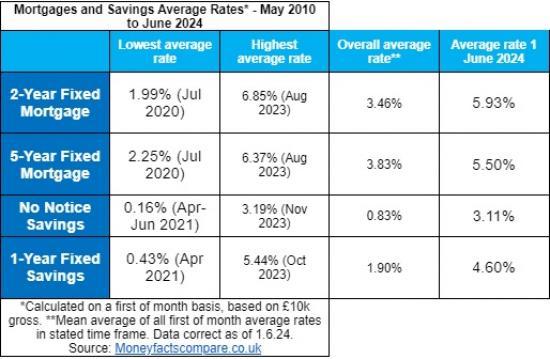What's Happened To Mortgage And Savings Rates Since 2010?
12th June 2024

Average two-year fixed mortgage rates fluctuated by less than 1% (between 1.99% and 2.97%) across seven years between April 2015 and April 2022, with five-year fixed deals remaining similarly steady during that time period.
The average two-year fixed mortgage rate was less than 2% (1.99%) in July 2020, but had more than tripled to 6.85% just over three years later in the aftermath of base rate rises and the 2022 mini-Budget announcement.
For almost 10 years between December 2012 and October 2022, the average no-notice savings rate was less than 1%.
From April to June 2021, the average easy access account paid just 0.16% in interest - or £16 for every £10,000 deposited.
By October 2023, average rates had reached over 3%, where they remain today.
The gap between the average two-year mortgage rate and the average no-notice savings rate shrank from 3.87% in May 2010 to 2.82% in June 2024.
James Hyde, Spokesperson at Moneyfactscompare.co.uk, said, "Mortgage rates may have fallen significantly since peaking last year, but they remain much higher than they've typically been over the past 14 years.
"For example, those who are coming to the end of a five-year fix in June 2024 can expect to see their interest payments almost double, with average rates rising from 2.85% then to 5.5% now.
If they wish to fix for a shorter term to keep their future options open, rates will be even higher: the average two-year is currently close to 6%.
"Savers are at least seeing real-terms profit on their deposits right now, with easy access accounts having paid an average of less than 1% since May 2010 - despite the average inflation figure over the same time period being over 3%.
